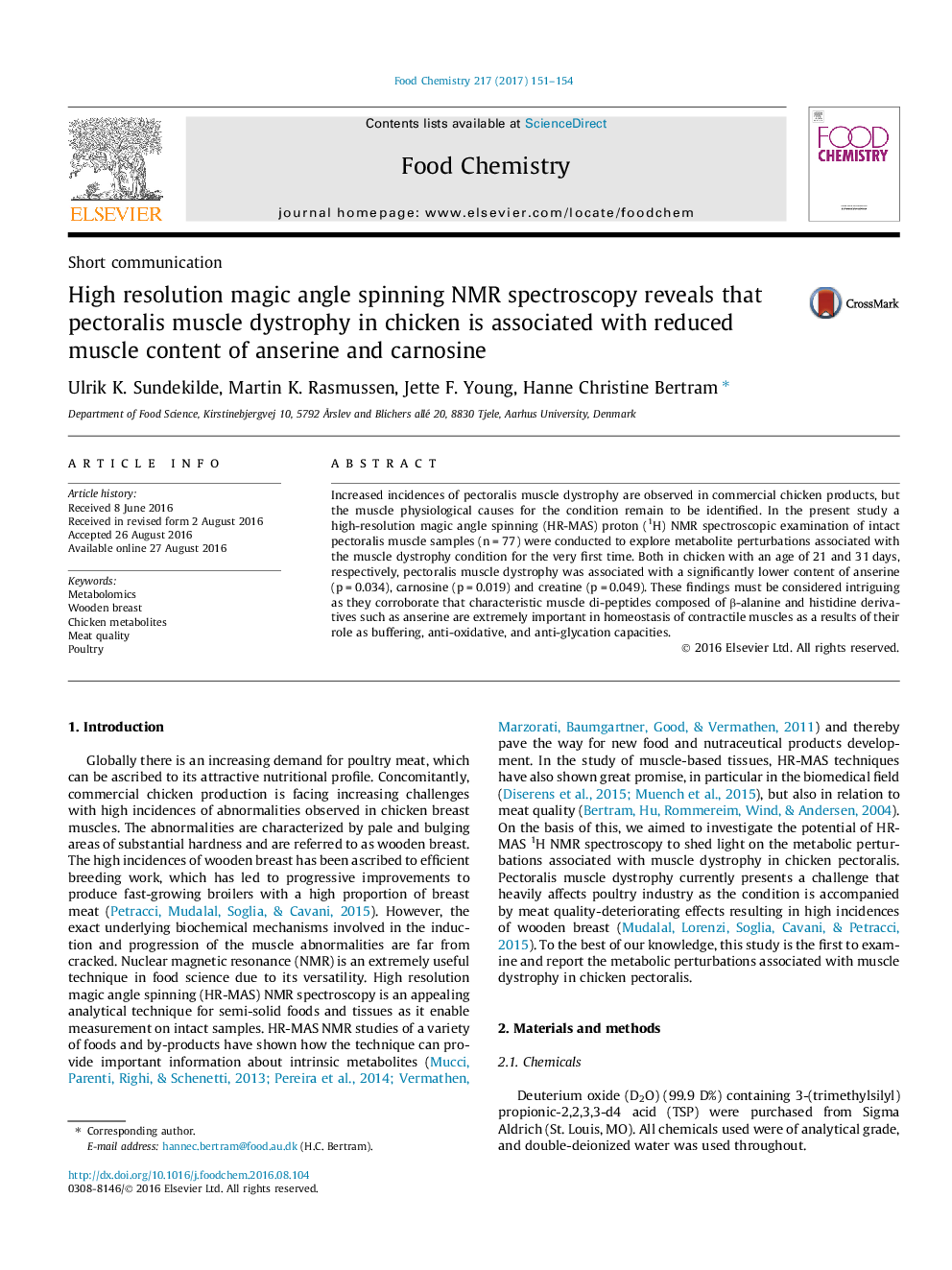| Article ID | Journal | Published Year | Pages | File Type |
|---|---|---|---|---|
| 1184743 | Food Chemistry | 2017 | 4 Pages |
•HR-MAS NMR reveals metabolic agitations associated with chicken muscle dystrophy.•Anserine and carnosine are decreased in dystrophic chicken pectoralis muscle.•The results suggest that muscle dystrophy is associated with perturbed homeostasis.
Increased incidences of pectoralis muscle dystrophy are observed in commercial chicken products, but the muscle physiological causes for the condition remain to be identified. In the present study a high-resolution magic angle spinning (HR-MAS) proton (1H) NMR spectroscopic examination of intact pectoralis muscle samples (n = 77) were conducted to explore metabolite perturbations associated with the muscle dystrophy condition for the very first time. Both in chicken with an age of 21 and 31 days, respectively, pectoralis muscle dystrophy was associated with a significantly lower content of anserine (p = 0.034), carnosine (p = 0.019) and creatine (p = 0.049). These findings must be considered intriguing as they corroborate that characteristic muscle di-peptides composed of β-alanine and histidine derivatives such as anserine are extremely important in homeostasis of contractile muscles as a results of their role as buffering, anti-oxidative, and anti-glycation capacities.
